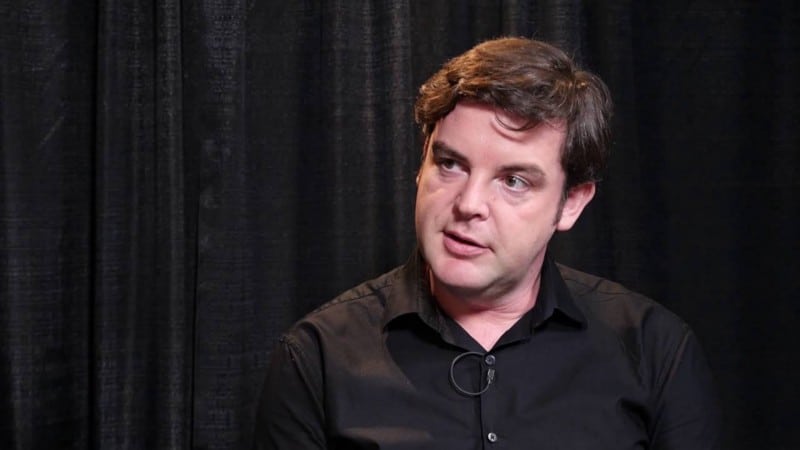A conversation with Barry O’Reilly, business advisor, entrepreneur, and author.
This is part of my series on thought leaders in the innovation space.
If you remember the early days of the internet, you probably have fond memories of one of Barry O’Reilly’s first employers—Citysearch. Barry was coding HTML for the site in the late 90s: “I always joke that my greatest gift to the technology industry was when I stopped writing code. 20% of the time I’d go home feeling buzzed and energized; the other 80%, I would feel frustrated and angry.” Since then, Barry has found what truly energizes him—working with business leaders and teams to “invent the future, not fear it.”
Barry expanded on his shift from coding to advising and consulting: “As I was working in startups, I found that I loved technology, but I didn’t love the coding as much. I gravitated to product management and figuring out ‘should we build it’ rather than ‘can we build it?’ That sparked my curiosity more and took me down the path of leading product development teams.”

In his current work as a consultant, entrepreneur, and author, Barry has pioneered the intersection of business model innovation, product development, organizational design, and culture transformation. Barry is the author of Unlearn: Let Go of Past Success to Achieve Extraordinary Results, and co-author of the international bestseller Lean Enterprise: How High Performance Organizations Innovate at Scale. He is an internationally sought-after speaker, frequent writer, and contributor to The Economist, Strategy+Business, and MIT Sloan Management Review. Barry hosts the Unlearn Podcast and is faculty at Singularity University, advising and contributing to Singularity’s executive and accelerator programs based in San Francisco, and throughout the globe. He also sits on the advisory boards of Just3Things and AgileCraft, recently acquired by Atlassian.
It starts with alignment
Barry and I began our conversation talking about how important it is for a company’s innovation strategy to be linked to their corporate strategy and objectives. Issues arise when there is a mismatch: when technologists find a technology first and then look for ways to apply it, or when strategists go after solving a business problem, but it’s the wrong direction.
“It’s about building interesting solutions to solve interesting problems. When you have problem and solution definition, there is alignment and clarity on what to focus on — and that leads to better innovation. If anyone is operating in a silo, if there’s no coordination between what both sides are doing, if both aren’t actively exploring their problem spaces, then you’re not going to get interesting innovation happening.” Once you have that alignment, you can move into building your product and testing it with users.
“When you have problem and solution definition, there is alignment and clarity on what to focus on — and that leads to better innovation.”

Information is currency
Barry defines innovation as, “Breakthroughs prompted by new information that impact understanding, mindset, and behavior.” The notion of information is one of the keywords in this definition as Barry believes that “the currency of pure innovation is information.”
“The currency of pure innovation is information.”
Your customer testing provides the signal or feedback that your innovation is working or not. “Through customer testing, you get new information. As you’re going through that cycle, your currency is information based on your experiments. This information gives you a signal to either keep investing, stop investing, or do something else.”
He continued: “If you go through that cycle enough times, eventually you end up with a product that could generate value [other than information.] One value might be revenue. Up until that point, you’re paying for information as to whether you should keep investing. I think people lose sight of that. Revenue is a lagging indicator. Feedback, or performing desired behavior by customers, is a leading indicator.”
“Revenue is a lagging indicator. Feedback from customers is a leading indicator of their intent to buy something later.”
In the beginning stages of a project, your indicators of success are in stories and information: “When you’re doing innovation, you’re investing in information. You’re paying for information; you do experiments to gather information, to test your hypothesis. And then you use that information and to make more investment decisions.”

Throughout this cycle of testing, learning, and iteration, Barry stresses the importance of capturing what’s been learned. He calls this an after-action report or learning review: “We sit down and see what people have discovered as a result of trying a new behavior. What worked, what didn’t, what happened as they expected, what was different? Where is the new information? All of this is about discoveries.”
Barry encourages companies to formally capture and process the feedback they’re getting from customers or users to guide them forward: “What were the effects that you observed when you performed the experiment? What led to the desired outcomes you wanted? What unintended consequences did you discover? That leads you to the final step: what are you going to do differently? What actions are you going to take? How are you going to scale out, scale back, or iterate your next action or behavior?”

ExecCamp
Barry has created a program called ExecCamp to help companies innovate in a way that is slightly different than the typical transformation approach. In a previous job—running transformation for a global HR company— Barry observed that innovation initiatives were happening on the “edge of the organization.”
He explained: “We were having interesting successes and failures building new products or services, but they only drove a tiny bit of innovation in the company. It was innovation on the edge of the organization. It wasn’t changing the system. We had nodes of the company that would innovate, but the company as a whole wasn’t innovating.”
“Instead of leaders telling their teams to start acting differently, leaders are the ones that start acting differently.”
This led him to think about new ways that he could inspire innovation at a systemic level. He decided that he needed to inspire innovation at the leadership level: “If the leadership team is demonstrating and trying new behaviors, it can have a systemic network effect on the whole company. Every one models the behaviors that they see in leadership. I thought that maybe the [typical transformation approach] was wrong. Instead of leaders telling their teams to start acting differently, leaders are the ones that start acting differently.”

Barry explains his vision for ExecCamp. “We create an experience where leaders go outside their comfort zone. They not only build and learn new skills but go through a personal innovation process. They actually transform through that process. They go back to be coaches in their company to help other innovation initiatives succeed.”
Barry now runs these programs regularly: “It’s essentially an immersion experience for leadership teams to learn by doing; to get comfortable with being uncomfortable; to try new behaviors and build new products and services. Also, it’s about unlearning their existing behavior.”
He shared how ExecCamp worked for one company. He convinced eight leaders from the International Airlines Group to leave the business for two months to launch new businesses designed to disrupt the airline industry. While a huge commitment for the leaders, the payback was huge as well: “Great innovations came out of that: they created the first identity management tool for blockchain. They launched a venture capital firm Hangar 51, which is the first venture capital firm in the airline industry; they made all their APIs and assets available to startups to build new products and services. It’s unleashed a whole raft of products. But the biggest impact has been the shift in leadership mindset from going through that program.”

Out of the comfort zone
We talked about how Barry approaches getting execs out of their comfort zone. He always wants to do it in a way that makes them feel safe, even while pushing them. “There’s always a tension between being uncomfortable, but not feeling so stretched that they’re in danger. There are high levels of safety. I always say ‘Think big. Start small. Learn fast.’ You need to think big and be audacious about your aspirations or outcomes. But you start small to get there so you can learn fast. By starting small, you’re safe to fail.”
One way he pushes leaders out of their comfort zone is to have them get closer to their customer’s point of few. For example, he once asked a leadership team from a phone company to go out and sign up for a new phone service in two hours. That shift in point-of-view can be radical for executives: “Those unlearning moments are invaluable if they’re behaving differently. It shifts their perspective and ultimately shift their mindset and encourages them to continue to shift their behavior.”
“You have to start acting differently to experience the world differently.”
This is what Barry describes as “unlearning,” which he wrote a whole book about. “You have to start acting differently to experience the world differently, to get new information to change the way you think about the world, shift your mindset, and then keep changing your behaviors. That’s the power of this whole system of unlearning that I’ve been coaching people with.”
Downstream effects
Today, one of the dangers of innovation that Barry identifies is that we don’t necessarily know how products are going to be used by customers in the future. “People are building products and they’re being used in ways that they hadn’t even thought of or anticipated. The behavior of the system is emergent; and, the behaviors of the system’s users are also emergent. It means people might use your product in ways you hadn’t thought of. A simple example is Facebook. Political entities are leveraging that platform to influence people, but in ways that the people who designed Facebook probably didn’t intend or think about.”
As we build more complex systems, Barry anticipates that these unexpected, emergent behaviors will continue to challenge us: “It’s important that you build-in mechanisms to understand how people are using your products and services. Are they using it in ways that you intended? If they are using it in unintended ways, is that aligned to the values of the product and service you’re trying to build? I think good product management now means that you need to think about both of those sides of the equation.”
If you want to read my other articles about innovation experts and practitioners, please check them all out here.




